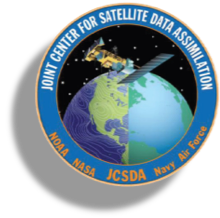The new interpolator hasn’t just made the code slightly more efficient - it has quadrupled the run speed for a 3DVar experiment with GSI static B.
From Space to Forecast: Harnessing TEMPO’s Hourly Observations with JEDI for Next-Gen Air Quality Monitoring and Prediction
Space Weather, New Observation Operators, and the DRAS Project Highlight a Remarkable Year for JCSDA
Using JEDI for Snow Depth Variational DA
With recent advances, JEDI can now perform variational (2DVar) data assimilation for snow depth analysis. The flexibility of JEDI and the generic implementations of data assimilation algorithms (in OOPS) and background error covariances (in SABER, System Agnostic Background Error Representation) enabled a rapid development of this system for snow depth analysis.
JCSDA Closes out DRAS Project with Enormous Success
In 2019 JCSDA was awarded a Disaster Relief Appropriations Supplemental (DRAS) grant from NOAA to accelerate JEDI development and integration, with an emphasis on connecting that development to operational use and systems. The main goals were to accelerate towards use in operational NWS production suites, improving R2O and O2R, and advancing tools for use of observations, all of which were accomplished.
NOAA AOML’s Dr. Pubali Mukherjee Visits JCSDA for Ocean Data Assimilation Collaboration
JCSDA Team Publishes and Presents Research at the 2024 International Conference on Computational Science
This week JCSDA’s Eric Lingerfelt gave a 20 minute talk at the International Conference on Computational Science in Malaga, Spain. He presented the Research Repository for Data and Diagnostics (R2D2) component of the Joint Effort for Data Assimilation (JEDI) in the conference’s thematic track “Advances in High-Performance Computational Earth Sciences: Numerical Methods, Frameworks & Applications”.
CRTM to Work With Upcoming NASA PolSIR Mission
The Polarized Submillimeter Ice-Cloud Radiometer (PolSIR) is an upcoming NASA satellite mission scheduled for launch in 2027, designed to study the elusive role of ice clouds in Earth’s weather and climate systems. In support of this innovative satellite mission, the PolSIR sensor will be simulated by the Community Radiative Transfer Model (CRTM).
Showcasing the Assimilation of TEMPO NO2 Data in the JEDI System with the GEOS-CF Model
In a recent collaborative effort between the Joint Center for Satellite Data Assimilation (JCSDA) and the Global Modeling and Assimilation Office (GMAO), we have successfully integrated the newly released Level 2 TEMPO NO2 products into the JEDI data assimilation system using the GEOS-CF model at C360/~25km resolution (the background and the analysis are at the same resolution). This initiative demonstrates the enhanced capability to monitor and produce analyses of atmospheric composition less than 24 hours after official product release, focusing on NO2, a significant pollutant and tracer for air quality.











